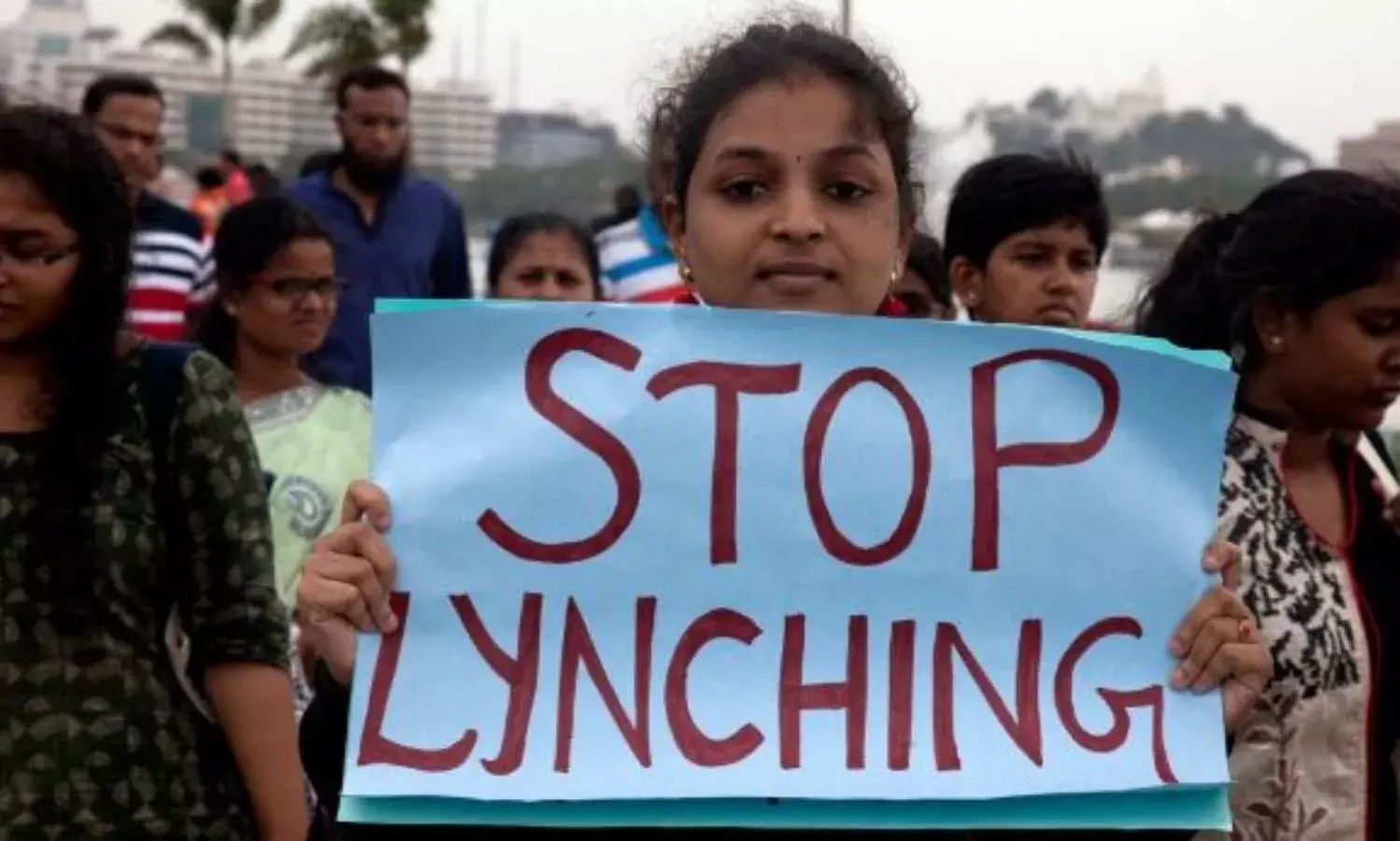How New India Developed its Own Lynch Culture in Just Five Years
Part 1 - Rising Tide;

On Holi, March 21 after the burning of the witch, a mob in Bhondsi, Gurgaon assaulted a Muslim family. In a video of the incident which went viral on social media, a group of young men can be seen entered the family’s home and assaulting another young man with iron rods and hockey sticks, while the other family members barricade themselves on the above floor, watching, recording, and crying for help.
According to reports at least 12 members of the joint family, including a year-old infant, were injured in the attack. One can only imagine the horror and terror which would have engulfed the entire family.
In another incident the day before, the night of Holika Dahan, a 20-strong mob beat a 50-year-old Mohammad Anwar to death in Parsoi, Sonbhadra, Uttar Pradesh.
As is increasingly accepted, such lynchings are not stray incidents but are targeted. They are part of a broader lynch mob phenomenon that has engulfed Indian society over the last five years.
Ever since the Bharatiya Janata Party assumed power at the centre, with Prime Minister Narendra Modi at the helm whose chief ministerial tenure saw the murders of over a thousand Gujaratis in 2002, there have been over 60 recorded lynchings in the name of ‘cow protection’ alone. And dozens more where mobs have lynched Muslim, Christian, Sikh and Dalit Indians over rumours and suspicion.
The perpetrators have all been Hindus. Often the police have stood by and watched. Politicians have come out in support of the attackers, often found to be political workers themselves. Cases have typically been filed against the victims and not the mob. The lynchings have occurred disproportionately in states governed by the BJP.
Last year in response to a PIL the Supreme Court noted that ‘Lynching is an affront to the rule of law and to the exalted values of the Constitution itself… Lynching by unruly mobs and barbaric violence arising out of incitement and instigation cannot be allowed to become the order of the day’.
The apex court asked state and central governments to formulate laws to prevent mob violence. Three days later, a mob beat Akbar Khan to death in Alwar, Rajasthan, on suspicion of cattle theft.
Predictably, the tide has risen to engulf victims beyond the usually targeted communities.
Last year a mob assaulted Professor Sanjay Kumar of the Mahatma Gandhi Central University for allegedly ‘dishonouring’ former prime minister Atal Bihari Vajpayee.
The Arya Samaji social activist Swami Agnivesh was attacked by a mob in Jharkhand last July, when he was on his way to adivasi villages to further the Pathalgadi movement (pdf, page 19). Agnivesh was again chased away by a mob while trying to pay homage to Vajpayee in August.
These incidents show that mob violence hitherto centred on ‘cow protection’ has mutated into something yet more sinister. Criticism of the government, its RSS mentors, or prominent politicians have also become accepted reasons for lynching.
Lynchings have been normalised to such a degree, the mobs are so sure of safety and impunity and support, that they can now enter homes and assault and terrorise families at will.
The unabated continuance of mob lynching as a form of violence can be understood as lynch mob culture, or lynch culture.
According to an annotation to The Autobiography of Malcolm X, ‘the term lynch culture has often been applied to the informally organized system of brute violence and murder carried out by whites in the Ku Klux Klan and smaller localized groups such as the Black Legion. These lynchings often took place without benefit of trial or legitimate charges. Notorious for the sadistic methods used against victims, they were carried out in a carnival-like atmosphere. Photographs were taken to be made into postcards, and bloody “souvenirs” taken from the victim.’
In our situation a lynch culture is visible among specific sections of Indian Hindus, that has seemingly developed since 2015, and mainly victimises Muslims and Dalits.
Lynchings are often recorded by the perpetrators, and uploaded and circulated on Facebook or YouTube. The most infamous case is perhaps Shambhulal Regar, who hacked Afrazul Khan to death and burnt the body on video, and has been offered a ticket to contest the upcoming Lok Sabha elections.
In our lynch culture too, no proper legal process is followed to determine the guilt of the accused, and often there is a carnival-like atmosphere with the culprits seen enjoying the whole ‘drama’.
The question arises, what and who is perpetuating this lynch culture? Some possible reasons are considered in the second part of this article, to follow.
77 Lynchings Reported March ’17 to July ’18

